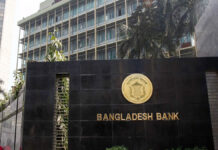The Business Standard | 08 March, 2020
Strong remittance shrinks current account deficit

The country’s current account deficit declined by 61.37 percent in the first seven months of this fiscal year due to fall in imports and increase in inward remittances.
According to the Bangladesh Bank data, from July to January of this financial year, the current account deficit stood at $1.51 billion, down from $4.04 billion for the same period a year ago.
The current account records a nation’s transactions with the rest of the world – specifically its net trade in goods and services, its net earnings on cross-border investments, and its net transfer of payments – over a defined period.
At the said time, net foreign direct investment increased by around four percent. Data show that in the said period, the country’s trade deficit narrowed to $9.64 billion from $9.87 billion a year ago.
During July to January of FY20, export and import fell by 5.31 percent and 4.43 percent respectively.
Service sector’s trade deficit increased by 19 percent to $2.19 billion.

Dr Zaid Bakht, research director at the Bangladesh Institute of Development Studies, told The Business Standard coronavirus had slightly slowed down exports and imports because China is a big trading partner of Bangladesh.
He said the current account balance would not be hampered finally as both exports and imports were decreasing.
There is no need to be worried, said Zaid.
The strong inflow of remittance spurred by the government’s two percent cash subsidy contributed to reducing the pressure on the foreign exchange market.
From July to February of FY20, remittance was up by 20 percent compared to the same period of FY19.
The consequence of slow private sector credit growth and import expenditure was reflected in the piling up of excess liquidity and foreign exchange reserve.
Foreign exchange reserve crossed the $33.36 billion mark in February, the highest in the last two-and-a-half years.
The inter-bank foreign exchange rate remained stable for the last three months at Tk84.90-84.95.
Currently, banks’ total foreign currency holdings are around $1 billion – which is considered sufficient for banks’ daily transactions.









